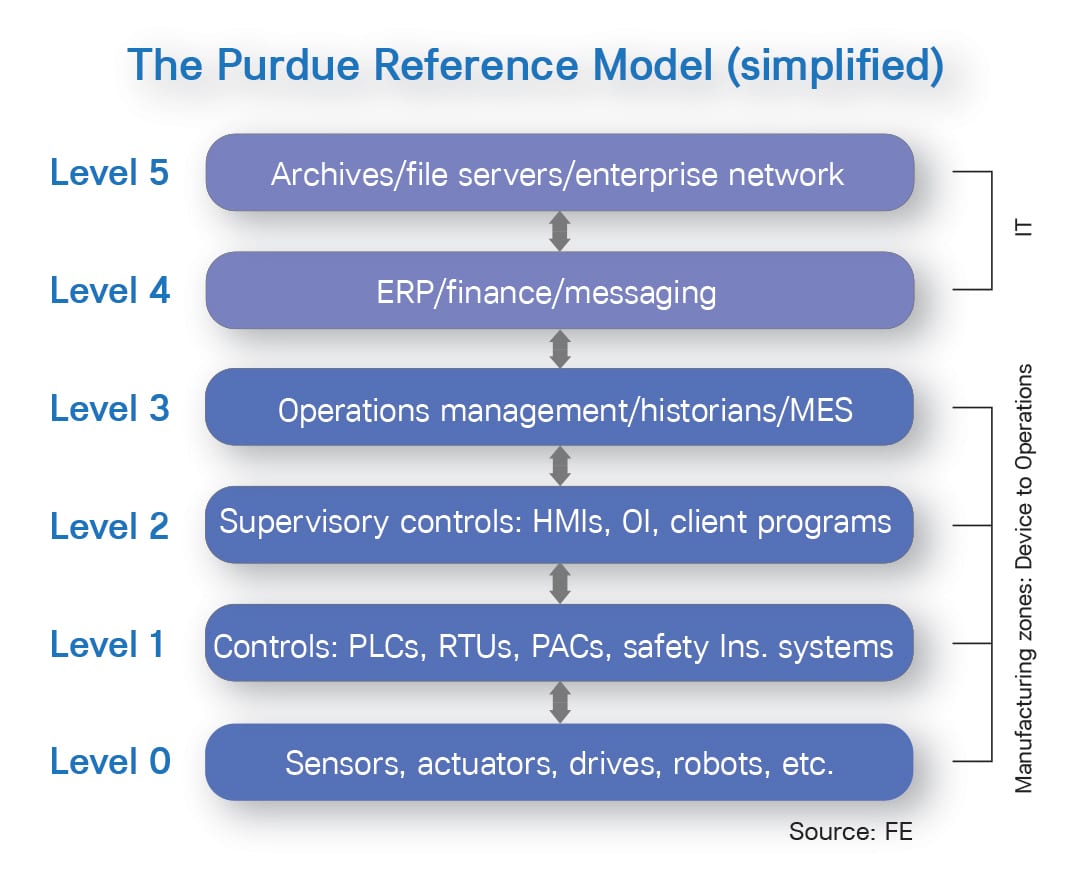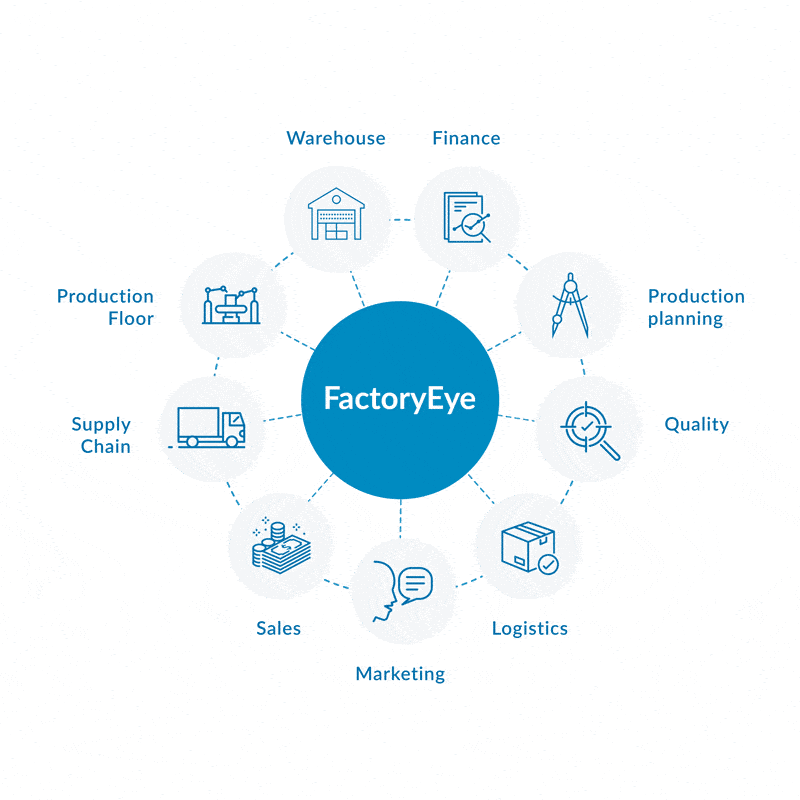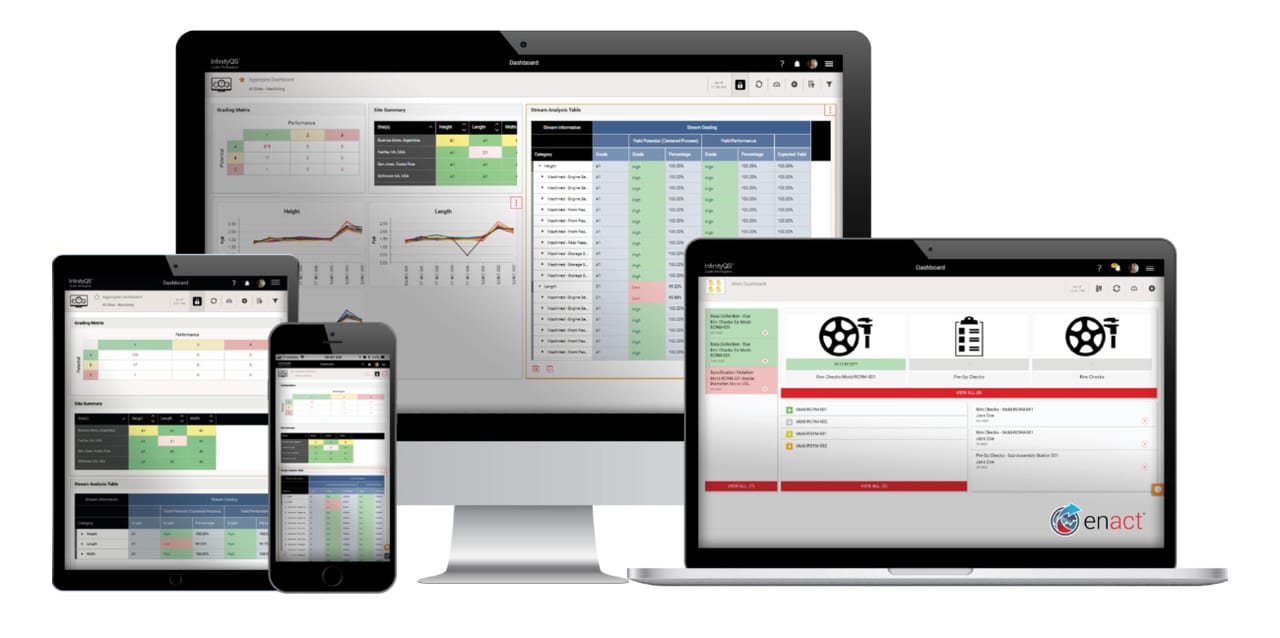APRIL 2022
relies on smart sensor data, human input
Digital transformation
The right tools can enable real-time information on process, inventory and suppliers
Photo courtesy of Endress+Hauser
Without sensor data, you can’t control a process—much less begin a digital transformation at your facility. KPIs (Key performance indicators) are a way to measure how your process, packaging or even your palletizing areas are performing, but to get these KPIs requires sensor data.
This sensor data can come from instrumentation to measure flow, level, pressure, density, temperature, presence/absence and more. It can also include data collected about machine operation for maintenance purposes, data obtained from human observation of processes and machines, and even supplier input regarding the quality of ingredients arriving at your loading dock.
In this article, we take a brief look at sensors and show a couple of real-world implementations where sensor data has been used to begin a digital transformation at food plants.
The convenience of smart instrumentation
Today’s smart instrumentation typically has advanced diagnostics and is often capable of multiple measurements, e.g., both pressure and temperature. With digital outputs, these devices provide a lot more information than their analog (4-20 mA) counterparts of a couple of decades or more ago. For example, some magnetic flowmeters also provide process variable outputs for temperature and conductivity.
Wayne Labs, Senior Technical Editor

These multiple outputs let users reduce the number of process instruments and wires to a distributed control system (DCS) or other central data processing units (e.g., PLC, industrial PC or loop controller), while providing additional process information like phase separation or secondary measurement values.
In some older food plants, existing sensors may not provide the right data to make informed decisions on a process; they could be analog 4-20 mA devices and don’t have the capability of self-diagnostics. But, is it possible to update these devices so they could fit in with a modern system to provide actionable information? Or, should they be converted to HART (Highway Addressable Remote Transducer) or completely digital communications if wiring allows?
In this Purdue Reference Model of automation hierarchy, MES software plays a key role in digital transformation of faculties as it collects data from sensors and actuators.
In many cases, it is possible to upgrade electronic PLC input modules to support digital communication, taking advantage of diagnostics and other process variables the instrumentation provides. Many plants use HART-enabled instruments on their 4-20 mA loops and may not even be aware of it. “It is our estimate, based on the past 10+ years of sales in the food and beverage industry, that more than 85% of instruments in use already have digital capabilities, most of which are not being used,” says Ola Wesstrom, senior industry manager F&B, Endress+Hauser.
Sensor connections: Wireless and wired
While using HART-based sensors helps provide digital communications over existing analog wiring, would it make sense to use wireless digital sensors in a facility where wiring is either absent or so old that it may not be reliable?
“Depending on the application need, instruments used for process control today should be hardwired, in my opinion,” says Wesstrom. “It is possible we will see further adoption of wireless for process control in the future. Wireless is an excellent option when process and diagnostic variables are used for data and information gathering. WLAN and Bluetooth are most commonly used, and for larger plant installations, we are seeing the adoption of 5G.”

Angel Bakeries is an approved supplier for some of the world's leading fast-food chains. Photo courtesy of Angel Bakeries
What about interface devices to get sensor data to computer systems with software that can make intelligent decisions on controlling finicky processes? Most major sensor/instrumentation companies support open protocols such as HART, IO-Link, EtherNet/IP, PROFINET/PROFIBUS PA/DP, WLAN and Bluetooth, while Endress+Hauser instruments speak these protocols natively, says Wesstrom. From there, wired or wireless gateways pass along instrumentation information, and can communicate bidirectionally with control systems and cloud solutions.
In retrofitting older machines that don’t have sensing equipment that can be networked, Wesstrom suggests that some modeling can be done using the sensors’ primary process variables, and creating performance indicators by measuring simple inputs and outputs alone.
Converting to digital may be easier than you think. Take a look at your existing equipment because there is a good chance you already have 4-20mA HART-enabled instruments, says Wesstrom. “By adding HART-enabled I/O to your control system, it is a very short and inexpensive path to harvesting all diagnostic and secondary process variables at a central point.”
Angel Bakeries obtains actionable intelligence from sensors
Founded in 1927, Angel Bakeries has four facilities in Israel and a frozen production plant in the U.S. To ensure product freshness, bakery and bread products cannot be stored so the bakery needed a way to closely monitor production floor data to perfectly match consumer demand. The company sought a solution to accurately calculate production quantities and obtain inventory reports in real time while reducing product waste. The bakery also wanted better control of work performed on their production lines, including reporting of stoppages or failures, in order to improve line usage and facilitate more precise planning.
As a solution, the bakery selected FactoryEye, which is a plug-and-play Industry 4.0 software option. FactoryEye sensors connect directly with equipment, facilitate remote communications between workstations and operators and deliver analytics-driven dashboards to managers at all levels.
“The most drastic improvement derived from FactoryEye’s solutions is that we know the inventory situation at any point in time without manual intervention,” says Yoni Shor, vice president of operations at Angel Bakeries. “Significantly less time is dedicated to reporting, and the handover from production to distribution is considerably smoother. As a factory that operates according to a strict schedule to preserve the freshness and quality of our products, online real-time tracking of the production system is vitally important for optimal utilization of our resources.”

Angel Bakeries selected FactoryEye, which has sensors that connect directly with equipment. Image courtesy of Magic Software
Putting sensor data to use: Danone
Danone Specialized Nutrition sought to enable its digital manufacturing vision with an AVEVA MES (manufacturing execution system). Key reason for choosing this MES was the lack of a legacy standard or “core model” to ensure process consistency across its sites. In addition, Danone needed to preserve traceability, capture and report key metrics from sensor data like factory usage and measure so-called invisible metrics within their processing plants, all of which could be executed more efficiently, reliably and in real-time using digital metrics.”
“We had the ambition to develop a state-of-the-art MES and chose AVEVA as a strong and global partner to maintain and improve our core model,” says Sebastien Boissier, specialized nutrition digital manufacturing director at Danone.
Working with the supplier, the Danone Specialized Nutrition team developed a customized MES (DANMES) model that provides functions for deployment across manufacturing sites, including a standard interface to SAP. “The model-driven MES template gave our plants the flexibility to deploy a menu of 20 standard functionalities, including standard interfaces to all Specialized Nutrition plants,” says Boissier.
Adopting a digital measurement approach has enabled Danone to implement pre-approved FDA-compliant processes to ensure high-quality product while it was undergoing its technical change. The system has been successfully deployed at Danone’s Indonesia site and in China, and is being rolled out at two sites in France and the Netherlands prior to installing it at Danone’s 25 Specialized Nutrition sites worldwide.

King & Prince Seafood uses InfinityQS as their browser-based SPC system. Photo courtesy of InfinityQS
Keeping incoming seafood ingredients under control
King & Prince (K&P) Seafood took the recommendation of its sister company, Gortons, in implementing an InfinityQS software system at all three of its U.S. plants to monitor more than 100 of its processes and to ensure the highest quality of sustainable seafood purchased from its global supply chain.
At K&P, raw materials represent 60-75% of a finished seafood product, and the company relies heavily on the centralized quality data in the software to quickly spot trends. This enables K&P to work closely with suppliers to correct issues—before raw materials get shipped to the United States.
Total visibility into its quality data enables K&P to quickly find trouble areas without having to guess. The software also helps K&P better manage the quality of the seafood being purchased from different suppliers—which helps keep the starting product as close to the same as possible—and the company has seen increased value as a result. According to Aaron Scott, supply QA manager at K&P, “When we process raw materials at our U.S. plants, we have a lot more standardization now. Any variability we have is under our control—at the factory level.”
"As a factory that operates according to a strict schedule... real-time tracking of the production system is vitally important." —Yoni Shor, VP of operations, Angel Bakeries
Real-time data visibility enables K&P to manage its inputs in the country of origin—reducing variation and letting them focus on their value-added processes in the U.S., where they have more control. Says Scott, “Significant improvements in our ‘Percent Right First Time’ metric are evident, and we are consistently working towards a 100% RFT.”
When K&P digitized its manufacturing process, it could view quality data from all points of origin in one centralized database. This digital transformation enables the processor to quickly and easily analyze quality and manufacturing information—and make intelligent business decisions. “The data we collect in InfinityQS totally guides our purchasing and manufacturing processes,” says Scott.
According to Tracy McConnell, VP of tech services, K&P informed global suppliers that using the software was “a non-negotiable activity. We need this information to be a better company. ‘Your pen and paper are going away, and you have to use InfinityQS from now on.’” To ensure continued buy-in, McConnell works closely with suppliers to evolve their system development.
The software manage K&P’s supply chain and also lets K&P’s procurement managers use the quality data to determine supplier capability when it comes to producing new products—helping K&P determine which suppliers to use. FE
APRIL 2022


